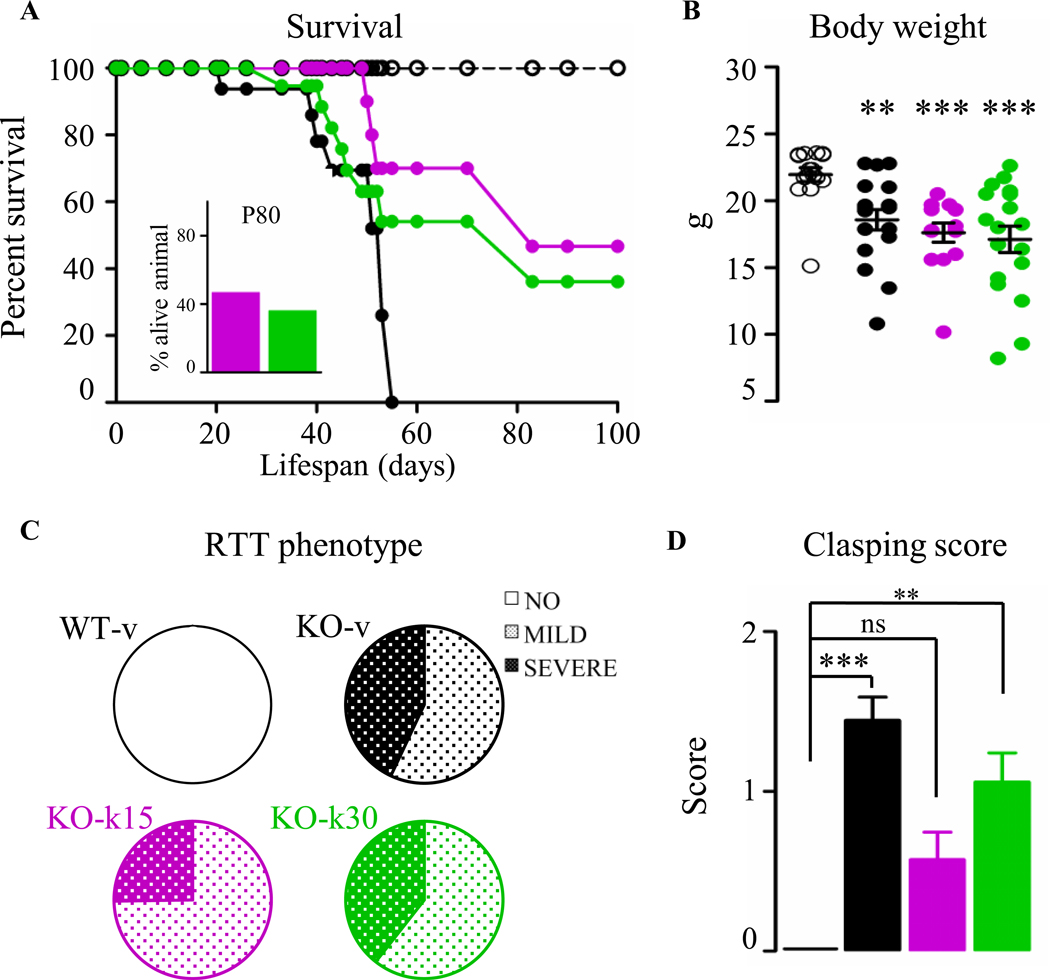Figure. 2.

Prolonged ketamine treatment improves key RTT-like phenotypes. (A) Survival curves in WT (empty circle) and in Mecp2 KO treated with vehicle (black-filled circle) or ketamine from P15 (magenta) or from P30 (green) revealed prolonged ketamine treatment improved the lifespan of Mecp2 KO mice. (B) No improvement of the body weight of P55 treated Mecp2 KO mice was observed (Kruskal-Wallis, ** p ≤ 0.01; *** p ≤ 0.001, Dunn’s post-test). Data are expressed as mean ± SEM. (C) The phenotypic severity score spans three groups: absent (white), mild (light polka dots), severe RTT phenotype (dark polka dots). Notably, almost 80% of the adult KO-k15 mice had a mild score compared to their age matched KO-v. KO-k30 mice did not show an improvement in the RTT score severity. (D) The clasping phenotypic score was improved mainly in the KO-k15 mice (WT-v, n = 13; KO-v, n = 18; KO-k15, n = 14; KO-k30, n = 17 mice). Data are expressed as mean ± SEM.
